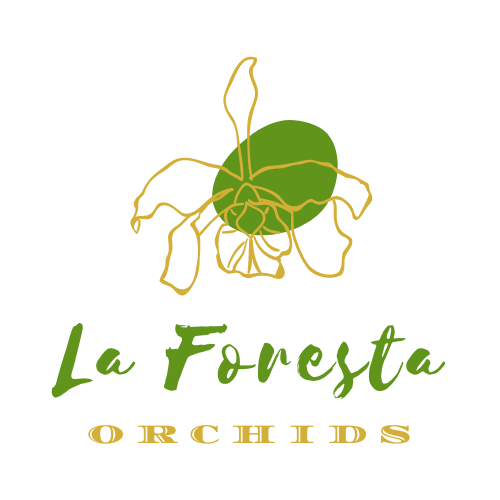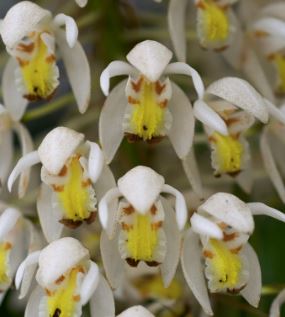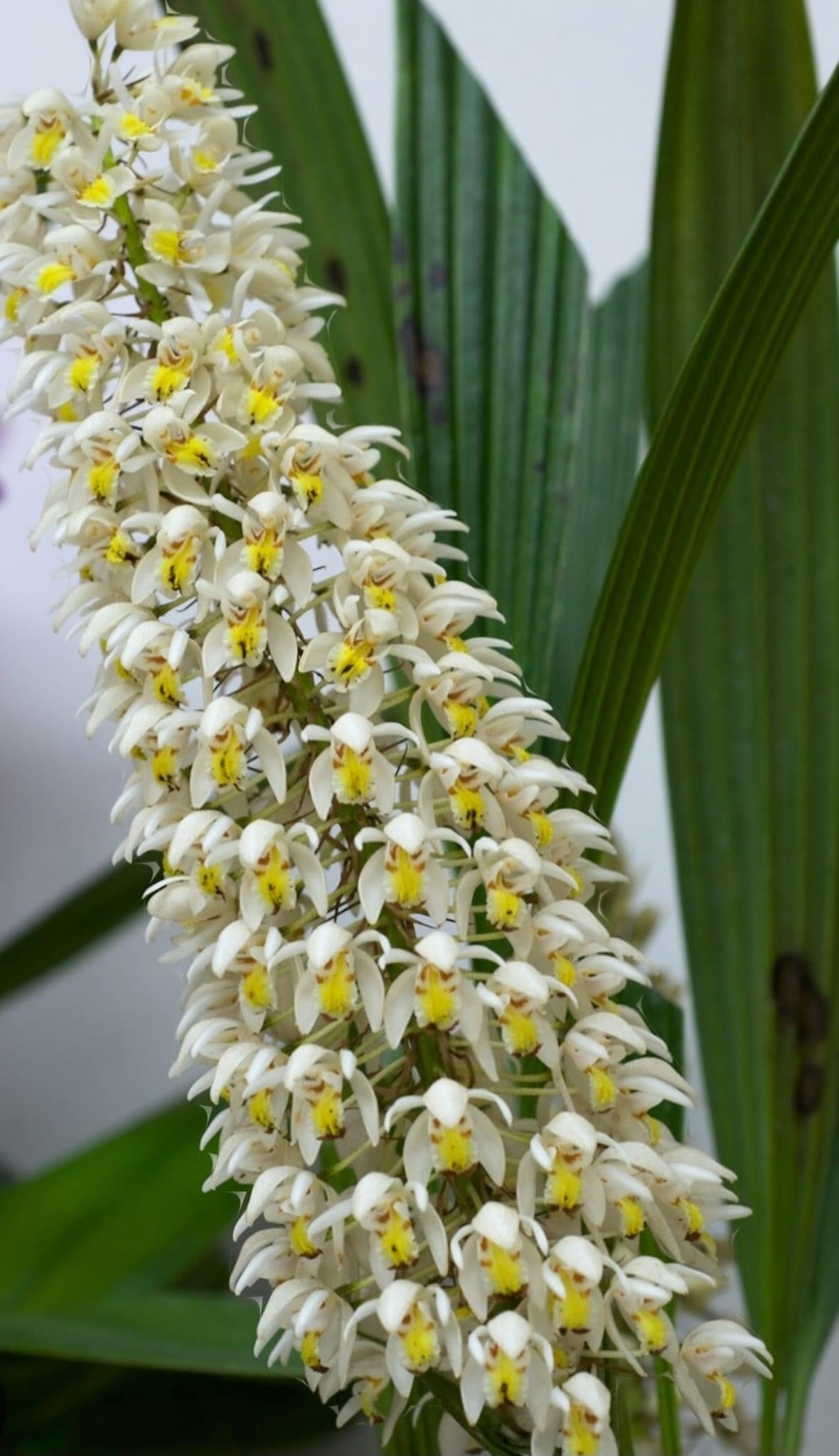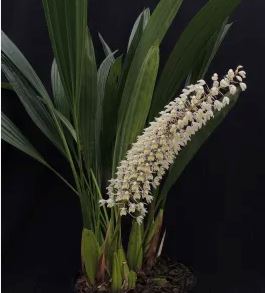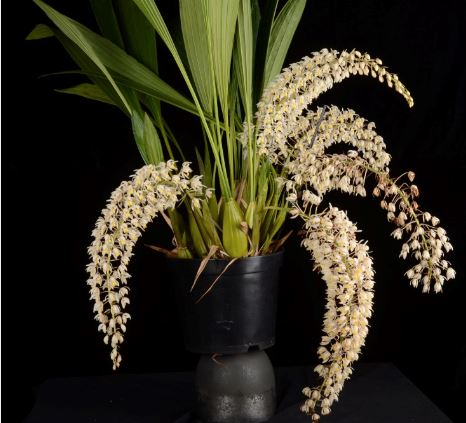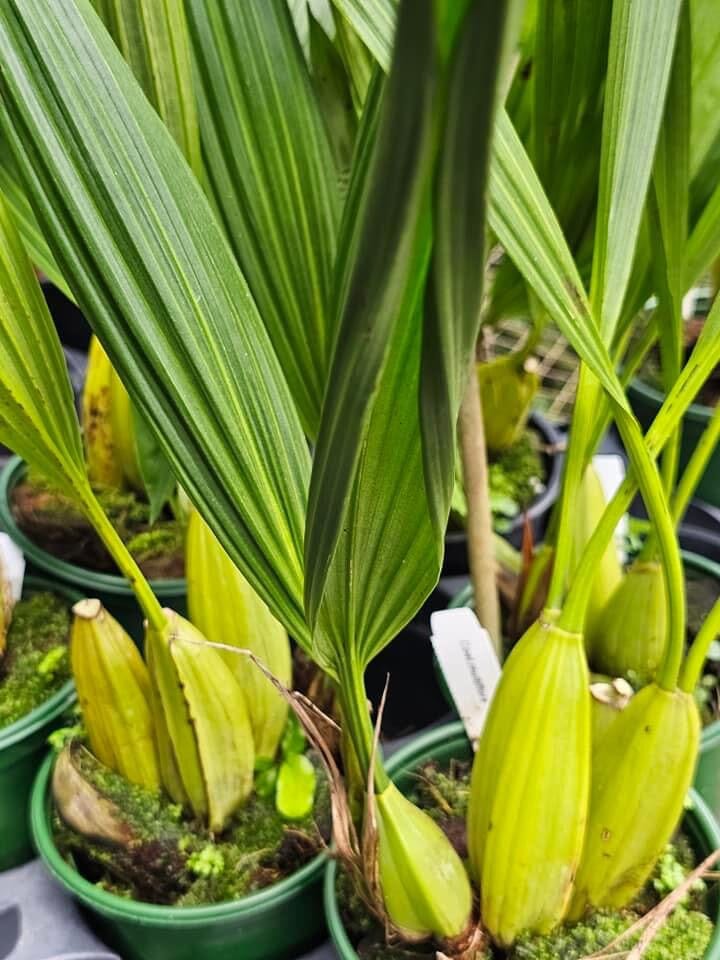Introducing the Coelogyne multiflora: A Symphony of Scented Splendor
The Coelogyne multiflora, aptly named for its multitude of small yet highly fragrant flowers, is a botanical masterpiece that captivates with its prolific blooms and unique cultivation requirements. Native to the lush landscapes stretching from India through Southeast Asia to the islands of the southern and eastern Pacific, this orchid, particularly the Sulawesi variety, thrives in warm, high-altitude environments.
Cultivation Tips:
Light: Coelogyne orchids prefer medium light levels of 20,000-40,000 lux and benefit from 50-70% shade cloth in summer. In winter, they can tolerate more light. Some species may experience leaf browning, often attributed to low humidity or insufficient watering.
Temperature: Temperature requirements vary, with most species favoring cool to intermediate conditions. Cold-tolerant varieties, such as Coelogyne cristata, require chilly nights for flowering induction. Adequate nighttime cooling in the winter is crucial for optimal growth.
Humidity: These orchids thrive in a humid environment, with around 80% humidity year-round. While they prefer high humidity, some species can tolerate short periods at 20% if misting is employed to temporarily elevate levels. Cold-tolerant species perform best in a shade-house with unrestricted airflow.
Substrate and Repotting: Using a bark-perlite mix with good drainage is recommended. Most Coelogyne are grown in squat pots, while varieties with pendulous racemes are suited for baskets. Repotting should be done sparingly, ideally when new growth commences or after flowering. Roots are sparse, so care should be taken to preserve them during division.
Watering: During active growth, these orchids from high rainfall areas should be well-watered. In winter, reduce watering frequency to prevent pseudobulb shriveling. Some leaf tip dieback may occur, signaling low humidity or insufficient water. Protect them from excessive wetness and frosts in winter, as flowers can mark if wet.
Fertilizer: Fertilization strategies vary, with recommendations ranging from frequent, diluted applications during the growing period to slow-release fertilizers in summer and autumn. A low-nitrogen, high-phosphorus fertilizer in late summer-autumn promotes flowering. Leach the pot every three weeks to prevent salt buildup from frequent fertilization.
Breathtaking Features: The Coelogyne multiflora lives up to its name with approximately 380 flowers per blooming, emanating a fresh ginger fragrance. Its arching stems bear creamy white flowers with a yellow lip, creating a captivating display in spring. This orchid, particularly the Sulawesi variety, boasts dramatic flower spikes emerging from the center of new growths, reaching heights of up to half a meter.
Bloom Time: In the Northern Hemisphere, expect these enchanting blooms in June and December, transforming your space into a fragrant haven.
Life Form: As a lithophytic orchid, Coelogyne multiflora thrives on fallen trees in lower montane forests, reaching altitudes of 1200m.
Fragrance: Indulge your senses in the delightful aroma of ginger, as this orchid fills your space with a scent reminiscent of a tropical paradise.
Habitat: Originating from Sulawesi, this warm-growing Coelogyne finds its natural habitat on fallen trees in lower montane forests.
This is a blooming size division in a 5” pot, newly repotted, about 1 to 2 years to bloom, grown from seed, limited!
In essence, the Coelogyne multiflora is not just an orchid; it's a botanical symphony that brings the exotic beauty of Southeast Asia to your home. Cultivate this orchid with care, and you'll be rewarded with a breathtaking display of scented blooms, making it the centerpiece of your orchid collection.
